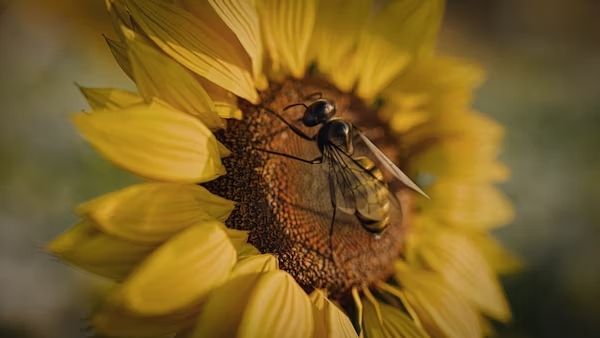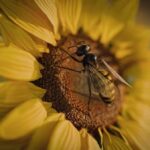In the symphony of nature, few players are as vital and yet often overlooked as the bee. At the heart of ecosystems, agriculture, and biodiversity, bees play a pivotal role as natural pollinators. Through a dance of wings and a whisper of motion, they enable plants to reproduce, crops to yield, and the food chain to thrive. The concept of the “Flowing Bee” is a poetic metaphor for this graceful, powerful, and essential natural process that sustains life as we know it.
In this article, we explore the power of natural pollinators, with bees at the forefront. We’ll uncover the science behind their work, the benefits they bring to humanity and the planet, and the urgent need to protect them.
What is a Pollinator?
A pollinator is any organism that helps plants reproduce by transferring pollen from the male part (anther) of a flower to the female part (stigma). This enables fertilization, allowing the plant to produce fruits, seeds, and new plants.
While pollinators include butterflies, birds, bats, and even wind, bees are by far the most efficient and important. The term “Flowing Bee” encapsulates not only their graceful movement through air and flowers but also their vital role in the flow of natural life cycles.
The Flowing Bee in Action: How Bees Pollinate
Bees collect nectar and pollen to feed themselves and their colonies. As they visit multiple flowers during foraging, pollen grains stick to their hairy bodies and get transferred from flower to flower. This process:
-
Promotes genetic diversity
-
Enables fruit and seed production
-
Supports entire ecosystems
Types of Pollinating Bees:
-
Honeybees: Social bees that live in colonies and are key agricultural pollinators.
-
Bumblebees: Known for “buzz pollination,” especially useful for crops like tomatoes.
-
Solitary Bees (e.g., mason bees, carpenter bees): Highly effective and less known, but crucial for native plants.
Why Natural Pollinators Matter
🌱 Biodiversity Support
Pollinators help over 75% of flowering plants reproduce. This sustains plant diversity, which supports insects, birds, mammals, and even humans.
🍎 Food Production
Bees are responsible for pollinating 1 in every 3 bites of food we eat. Crops like almonds, apples, blueberries, and cucumbers depend heavily on bee pollination.
💰 Economic Value
Natural pollinators contribute over $200 billion annually to global agriculture. Without them, food prices would soar, and crop yields would plummet.
🌍 Ecosystem Stability
Bees maintain ecological balance by ensuring that native plants reproduce, which keeps forests, grasslands, and wetlands healthy.
The Flowing Bee and Sustainable Agriculture
Natural pollination is a low-cost, high-impact solution for sustainable agriculture. Unlike artificial pollination or genetically modified crops, natural bees offer:
-
No emissions
-
No maintenance costs
-
Resilient ecosystem support
Farmers are increasingly turning to pollinator-friendly practices like planting wildflower strips, reducing pesticide use, and creating bee habitats to promote a stable crop yield.
Threats to Bee Populations
Despite their importance, bee populations are declining worldwide due to a variety of human-induced factors:
1. Pesticides
Especially neonicotinoids, which impair bees’ ability to navigate and reproduce.
2. Habitat Loss
Urban development, intensive agriculture, and deforestation have reduced natural foraging areas and nesting sites.
3. Climate Change
Unpredictable weather, temperature shifts, and altered flowering seasons confuse bees and reduce food availability.
4. Parasites and Diseases
Varroa mites, viruses, and bacterial infections have decimated bee colonies, especially honeybees.
The loss of bees means more than fewer flowers—it’s a threat to global food security and environmental health.
The Flowing Bee as a Symbol of Natural Harmony
The term “Flowing Bee” beautifully illustrates the balance and synchronicity bees bring to natural systems. Their unassuming work connects:
-
Plants to plants
-
Plants to animals
-
Nature to human survival
This symbolic bee reminds us that even the smallest creatures have massive impacts, and that nature thrives when its systems flow uninterrupted.
How You Can Support Natural Pollinators
You don’t need to be a farmer or scientist to support bees. Here’s how you can contribute to the survival and prosperity of these flowing pollinators:
🏡 Plant a Pollinator Garden
Choose native flowers that bloom throughout the year. Avoid hybrids that don’t produce nectar or pollen.
🚫 Avoid Chemical Pesticides
Use natural pest control methods or Integrated Pest Management (IPM) techniques.
🐝 Support Local Beekeepers
Buy local honey and support community beekeeping programs that foster healthy bee populations.
🌾 Create Bee Habitats
Install bee hotels or leave some parts of your garden wild to provide shelter for solitary bees.
📣 Raise Awareness
Educate others about the importance of pollinators through blogs, social media, or community events.
Figuring Out Pollination: The Science Behind It
Let’s dive into the science that makes bees such exceptional pollinators:
-
Electrostatic attraction: Bees generate an electric charge as they fly, helping pollen stick more effectively to their bodies.
-
Flower constancy: Bees tend to visit the same flower species during a foraging trip, increasing the chances of successful pollination.
-
Olfactory memory: Bees can remember scents associated with rich nectar sources, making them efficient foragers.
This precision and dedication make them irreplaceable in both natural ecosystems and human agriculture.
Bee Conservation Movements Around the World
There are many inspiring organizations and efforts globally working to save natural pollinators:
-
The Pollinator Partnership (U.S.)
-
Bee Friendly Farming (Global)
-
Bumblebee Conservation Trust (UK)
-
UN Food and Agriculture Organization (FAO) Pollinator Initiative
These efforts have led to policy changes, farmer education, and urban pollinator programs that reconnect bees with the habitats they need to survive.
Conclusion: The Flowing Bee is Nature’s Unsung Hero
In the rhythm of life, the bee is not just a background character — it’s a protagonist. The concept of the Flowing Bee symbolizes not only the grace of natural pollination but also its central role in sustaining life on Earth.
As climate change, habitat destruction, and chemical exposure threaten pollinator populations, it’s up to all of us — citizens, farmers, scientists, and policymakers — to recognize the bee’s value and act accordingly.






